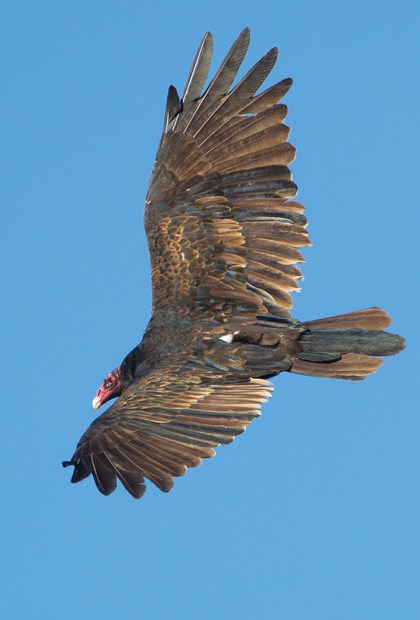Every spring we're treated to bird songs not heard since last year, as migrants arrive from their neotropical wintering grounds - some as far away as South America.
These include warblers, vireos, the black-headed grosbeak, and the western tanager. Song birds greet the day with their dawn chorus. Consider joining the Wild Bird Trust at The Conservation Area at Maplewood Flats to experience what has been called the symphony of birds for the annual Dawn Chorus event at 6 a.m. on May 16.
Wood warblers have been called the butterflies of the bird world. Species to be looked for on the North Shore include yellow-rumpled, yellow, black-throated gray and Townsend's. The beautiful little Wilson's warbler with its black cap is commonly seen at the edges of woods and in gardens. The orange-crowned warbler's thrill is a lovely song, but its orange crown is hard to see. In wetlands, such as Maplewood's west pond, listen for the distinctive "wichety, wichety," notes of the common yellowthroat, also a wood warbler. With its black Lone Ranger mask, it's very beautiful indeed. Other sounds in the wetlands to listen for are the red-winged blackbird, Virginia rail, sora rail and the Pacific tree (chorus) frog.
On the local mountains, sooty grouse are busy hooting and Pacific wrens are singing their wonderful twittering song. You should also listen for the kittenlike meow (to me) of the red-breasted sapsucker (a woodpecker), "chip, chip" of crossbills and the trills of juncos. A few words about the sooty grouse: in older field guides you will find a species called the blue grouse. It was split into two species: the sooty grouse (coastal) and the dusky grouse (Interior). The opposite of splitting is lumping. For example, the Audubon's warbler and Myrtle warbler were lumped into the yellow-rumped warbler. On the other hand the winter wren was split so that our local bird is now called the Pacific wren. As new data is gathered about bird relationships there will be more reclassifications, and it's not only with birds.
Always watch skyward, especially on warm sunny days, as raptors soar on thermal air currents. Turkey vultures, red-tailed hawks, and bald eagles are three local examples of soaring raptors. Sometimes ravens also soar, especially over mountain ridges. Look for the diamond-shaped tail of the raven - it's quite distinctive - and listen for its mellow croaks.
Good numbers of hummingbirds have been seen on the North Shore, both Anna's and rufous. The rufous makes a fantastic migration from its wintering grounds in Mexico. Some go all the way to Alaska. A question sometimes asked is whether we have Allen's hummingbird in B.C.? The answer is no, you will need to go to California to see one. But we do see rare hummers locally on the North Shore, like the tiny calliope.
Anna's hummingbird nests in late-winter and their young are already off the nest. Local rufous quickly set up nesting territory with their acrobatic displays. Did you know the Anna's hummingbird is an accomplished singer? It usually does its singing while perched. Air rushing through feathers in aerial displays is another sound that hummers make. The rufous is very good at this.
What do hummingbirds have to do with spiders? Spider silk is used in nest construction, along with materials such as mosses, animal fur, plant fibres (like cat-tail down), and lichens attached to the outside of the nest help to hide it.
Hummingbirds have also been seen picking out flies caught in spider webs. I saw a female doing this in Golden Ears Provincial Park. So it turns out there is a strong connection between spiders and hummers.
In the water, ducks and geese are well underway with nesting duties. Some waterfowl leave the North Shore in spring for breeding grounds in areas like B.C.'s Interior. The bufflehead is a good example. We have a couple of summer waterfowl, including the blue-winged teal and cinnamon teal. Maplewood's west pond is a good place to look for ducks, like teal, mergansers, mallards and the rainbowcoloured wood duck. In marine habitats, keep watch for cormorants, mergansers and pigeon guillemots. Guillemots are local members of the alcid family, which includes murres, auklets and puffins.
Other interesting spring things to look for include butterflies, seals and otters. Take time to enjoy the wonderful beauty and diversity of nature's diversity on the North Shore. Keep safe.
Al Grass is a naturalist with Wild Bird Trust of British Columbia, which offers free walks at The Conservation Area at Maplewood Flats on the second Saturday of every month. The next walk will be Saturday, May 9, starting at 10 a.m. Participants will look for signs of spring. Meet at WBT's site office, 2645 Dollarton Hwy, North Vancouver. Walks go rain or shine. wildbirdtrust.org



